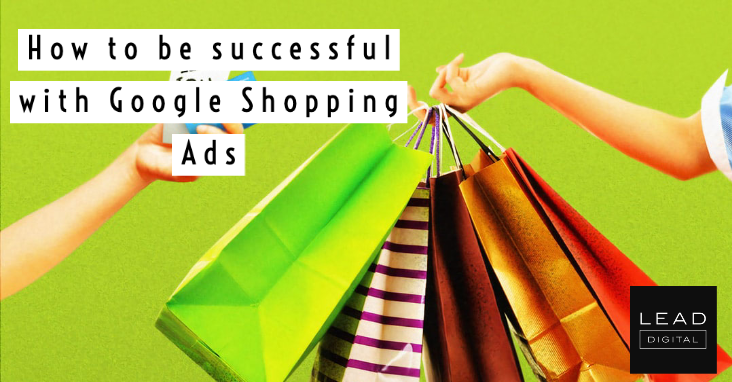 Inflow’s new eBook reveals to eCommerce vendors how to better leverage Google Shopping Ads by avoiding three common mistakes and drive value with one of three winning campaign structures.
Inflow’s new eBook reveals to eCommerce vendors how to better leverage Google Shopping Ads by avoiding three common mistakes and drive value with one of three winning campaign structures.
Denver-based digital marketing agency, Inflow, is a premier Google Partner that specializes in growing results specifically for eCommerce clients. Inflow recently published a comprehensive eBook, How to Identify and Execute a Winning Google Shopping Campaign, aimed at helping advertisers get the most out of their Google Shopping ads.
A brief history of Google Shopping
Google Shopping was initially launched by Google in 2003 under the name Froogle.
While initially free for vendors, in 2012, Google rebranded the service as Google Shopping and pivoted to a pay-to-play model where merchants paid to list their products using the Google Ads (formerly “AdWords”) interface.
Today Google Shopping exists as two platforms—Google Ads and Google Merchant Center. Merchants update their product information in Merchant Center, and create their paid shopping campaigns via Google Ads.
Google then displays your ad based on user search queries it deems most relevant. Unlike Google Search, Google Shopping campaigns operate without keywords.
Shopping ads, also known as product-listing ads or PLAs, differ from standard text ads because the content of the ad is pulled directly from the Merchant Center feed. Ecommerce-specific data, such as product images, price, rating, description and more, is displayed to users in place of ad copy.
The following screenshot illustrates the difference between text ads in a Search campaign, PLAs, and organic listings in Google’s search results for the query “levis jeans.”
On the Google Shopping experience, Inflow writes: “With Google Shopping users can browse and find the product they want without having to leave the search results page. In addition, the Shopping ad takes you directly to the product page of the product you see instead of sending you to a generic landing page. This tends to result in higher conversion rates and a much shorter customer journey.”
Three common Google Shopping mistakes
In their eBook, Inflow lists three common Google Shopping mistakes that advertisers often make. While discussed below, more details on each are available in the eBook.
Mistake #1: You haven’t added any negative keywords to your PLAs
You’re likely already using negatives in your Google Ads keyword campaigns, but did you know that you can also leverage negatives in your shopping campaigns?
Inflow recommends that advertisers review Shopping search queries every 7 – 30 days (based on traffic levels) to ensure ads are not serving for irrelevant terms.
Mistake #2: You’ve failed to segment your shopping campaigns
As with Search campaigns, Shopping campaigns perform better when they are organized and appropriately segmented. Per their eBook, Inflow states “Oftentimes in an audit we identify instant wins from simply organizing a messy account.”
Depending on the account, there are many ways to organize Google Shopping. According to the eBook, “products can be segmented by margins, product type, bestsellers, etc.” Segments can be created using thematically relevant ad groups.
Mistake #3: Your account suffers from poor campaign structure
The right campaign structure is just as important as correct segmentation for Shopping campaigns. Thoughtful and strategic campaign structures ensure traffic is directed to your best performing, most relevant products – and help save a lot of money.
The right campaign structure will also create more optimization levers so you can be sure your PLAs appear as often as possible and are leveraged appropriately by device.
Choosing a campaign structure
Inflow lists and explains three approaches that eCommerce marketers can take when structuring a Shopping campaign.
These approaches differ based on several factors, including sales volume, search queries, and customer demographics. Inflow suggests first analyzing the following:
Sales per day
Smart Shopping is a campaign type within Google Ads that uses machine learning to automate campaign management and increase conversions. But, like any machine learning, it is only as good as the data at its disposal.
Sales volume can affect performance of Google’s Smart Shopping campaigns and should be considered when deciding on a campaign structure. If you have high-ticket items that amount to fewer sales per week, this campaign setting may not be right for you.
Inflow provides in-depth guidance on how smart shopping works. “While all products behave differently, understanding how much conversion data Google will be working with is a crucial step in determining what your Google Shopping structure will look like,” Inflow explains.
Search query traffic
Google’s search terms report allows advertisers to see when their ads are triggered for the specific queries that users type into Google.
Inflow advises advertisers to review this report so they can understand trending queries that lead to sales, enabling them to adjust their campaign to focus on the best performing products and categories.
Customer demographics
The eBook addresses the importance of understanding your customers when applying manual bidding. This piece helps explain how to reduce wasted spend by getting your Shopping ads in front of the right people using demographic bidding.
Building winning Google Shopping campaign structures
With the common mistakes and important considerations in mind, the final piece of the puzzle is campaign creation. Inflow reviews three winning Shopping campaign structures that each leverage different features available to eCommerce marketers. – Read more




